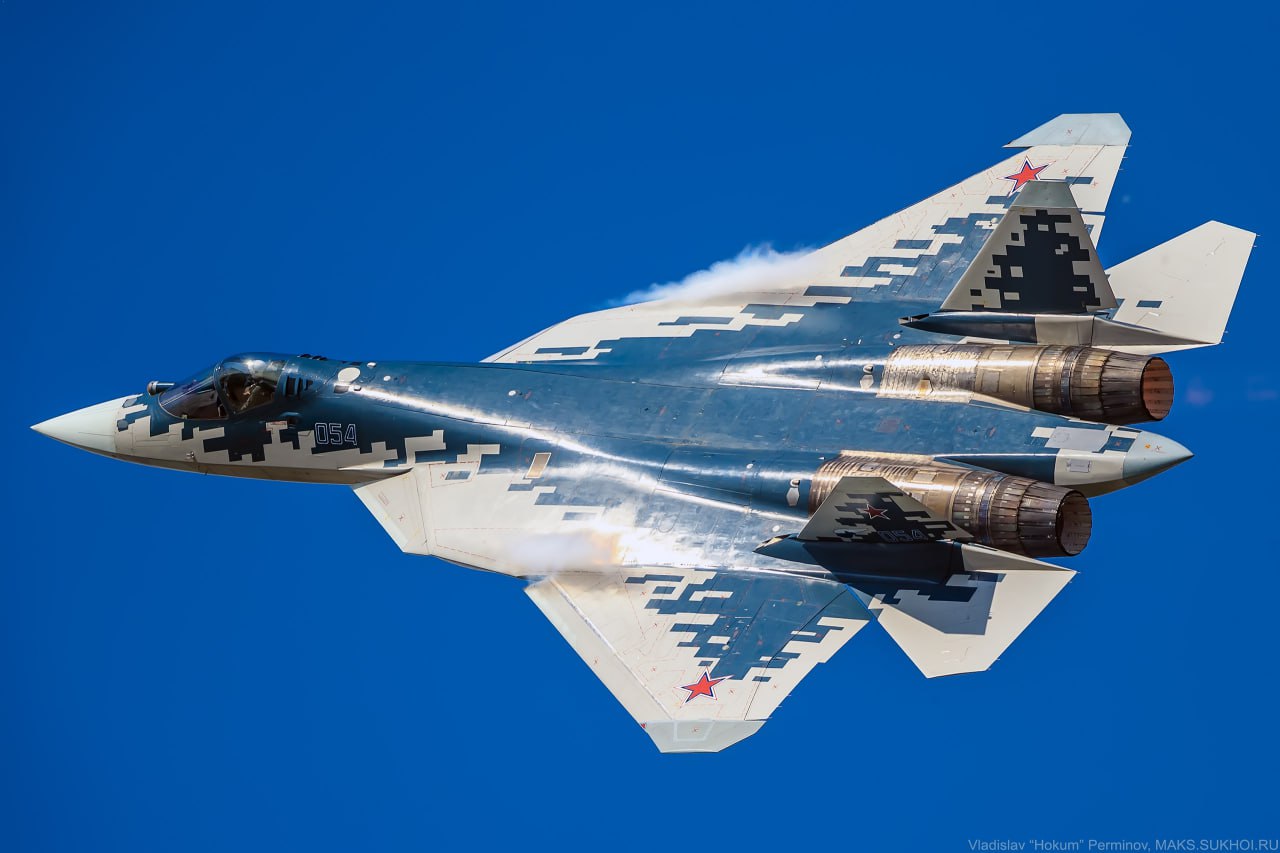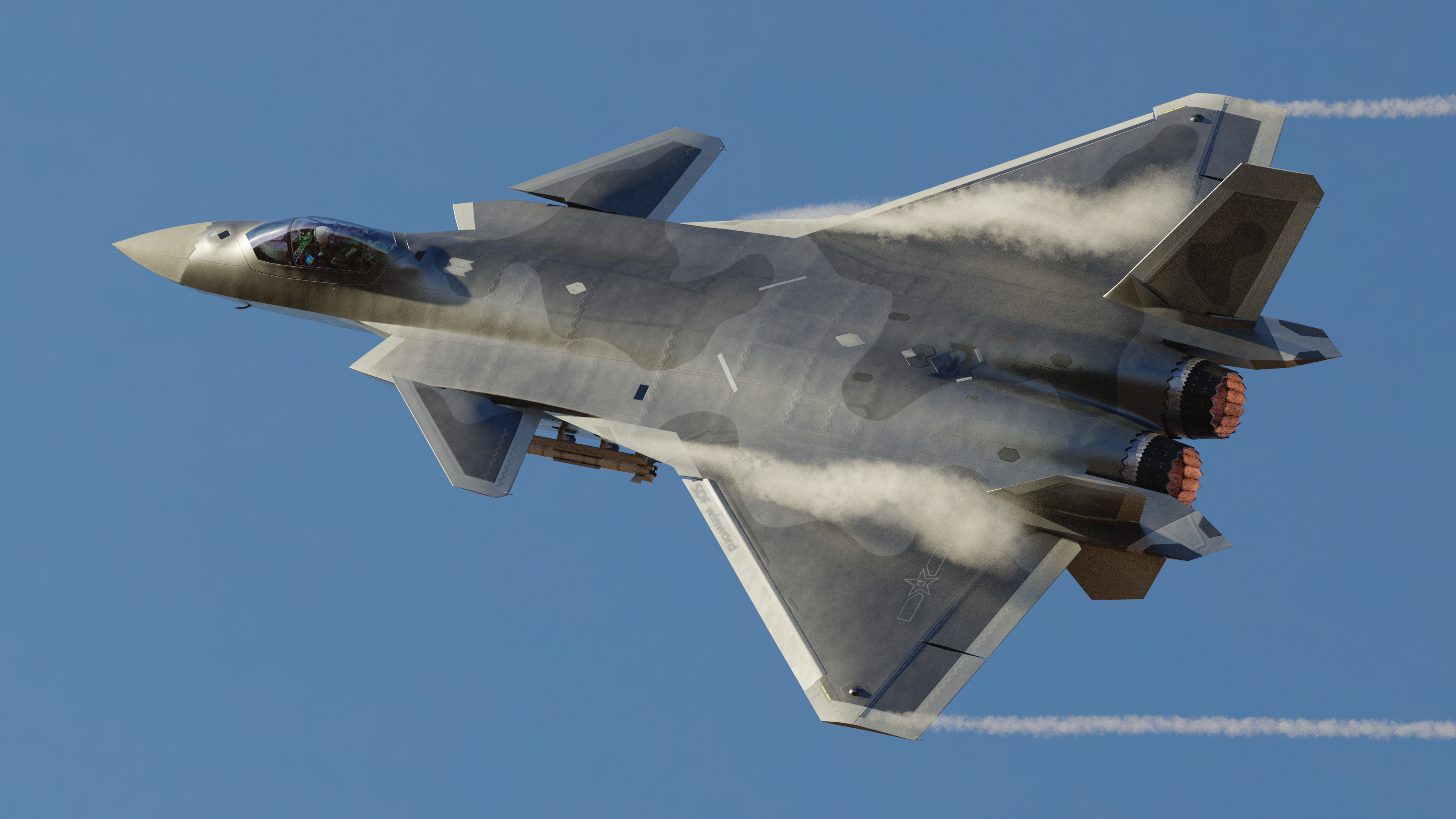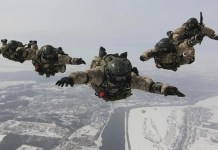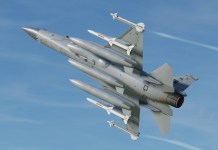Russia will upgrade its Su-57 Felon, a multirole stealth fighter jet, to better compete with the US’ F-35 and F-22 Raptors. The super-maneuverable Su-57 has found few takers in the global market since it entered serial production a few years ago, with the possible exception of China.
Mark Episkopos wrote in The National Interest that Russia is poised to pitch its fifth-generation fighter to China. Russia has already cleared the Su-57 for export.
The article quoted Viktor Kladov, an official from the Russian state-owned defense and technology conglomerate, Rostec, as saying–“China has recently taken delivery of 24 Su-35 aircraft, and in the next two years, [China] will make a decision to either procure additional Su-35s, build the Su-35 within China, or buy a fifth-generation fighter aircraft. This could be another opportunity for the Su-57E [the export variant].”
The Russian Su-57 made its maiden flight a decade ago but entered serial production only two years ago, and the first unit was delivered later that year. The production of the upgraded version of the Su-57 is expected to start in 2025, the EurAsian Times reported last week.
The upgraded version of the fighter is part of the Megapolis research and development project and comes with a completely upgraded cockpit with top-of-the-line avionics to be installed.
Additionally, the aircraft will be equipped with a second-stage power unit. According to the Russian news agency, TASS. The mass production of the upgraded Su-57 is anticipated to begin from 2025.
A Checkered Beginning
While the Su-57 had exhibited stellar performance, the fighter jet had a rough ‘take-off’. The first serially produced Su-57 had reportedly crashed in Russia’s Far East during its initial testing in December 2019. This coincided around the same time when India had expressed reservations about buying the Su-57.
RAND Corporation, a US-based think tank, had raised questions about whether the Su-57 can even be considered a fifth-generation aircraft. It pointed out that current prototypes have been outfitted with an older engine.
Sergei Chemezov, managing director of the Russian state-owned Rostec, said that the second-stage engine will be assembled in 2022, as per the schedule.
He also clarified that the new Su-57 fighter will be made in a single-seat version. TASS had reported that the Su-57 will be designed with a two-seat modification in order to control a swarm of heavy Okhotnik combat drones.
The Russian aircraft is touted as a direct competitor to the US F-22 and the Chinese J-20. However, Su-57 lacks a true stealth profile when compared to its counterparts.
An argument addressing this view is that stealth is not the Su-57’s core priority, by design. Instead, it is an option the Su-57 offers to the end-user. This school of thought is of the view that the Russian and Chinese fighters are incomparable as they are designed for distinct roles and missions.
Going from this point of view, the J-20 is a stealth missile platform designed to penetrate sophisticated enemy air defenses in order to destroy military installations.
On the other hand, the Su-57 is primarily an air superiority platform, excelling in close-combat air warfare, which could be tempting Beijing.

The Russian Defence Ministry has been the only customer to have placed an order to procure the aircraft thus far. A total of 76 jets are to be delivered to the Russian Air Force by 2028.
The SU-57 – What Makes It Attractive For China
The Su-57 is the brainchild of the Sukhoi Design Bureau and Russian Aircraft Corporation and is Russia’s first stealth-capable fighter. According to Airforce Technology, the Su-57 is part of the PAK FA fifth-generation fighter jet program.
The twin-engine aircraft was designed with multi-mission capability in mind, making it capable of carrying out both anti-air and air-to-ground operations. The Su-57 is expected to come with automation, and artificial intelligence technologies, holistically adding to Russian airpower.
The fighter jets have been designed with the intention of replacing Russia’s aging fleet of MiG-29 and Su-27 fourth-generation aircraft. Felon offers a supersonic range of over 1,500km, more than two times the range of the Su-27 fighter.
The aircraft comes fitted with an Izdeliye 117 or AL-41F1 augmented turbofan engine while the new Izdeliye 30 engines are expected to be added to the upcoming batches. Owing to its improved aerodynamics, the Su-57 can fly at Mach 2 speeds without having to use its afterburners.
Adding to the SU-57s lethality are talks that the country is planning to pair the stealth fighter with the S-70 Okhotnik (Hunter-B) strike drone. “The stealth-capable drone is also likely to be deployed as a ‘loyal wingman’ for the Sukhoi Su-57 fighter,” read the Airforce Technology report.
Another salient feature in the SU-57s development is that it comprises composite materials which means that it will significantly need a lower number of parts required for assembly. What this entails is that the overall weight of the aircraft will go down, ensuring mass production.
Being a multi-role aircraft, it is built with a blended wing body fuselage in order to effectively operate dually as a jet fighter and strike aircraft.
The Su-57 has 3D thrust vectoring controls to bolster the aircraft maneuverability at high speeds and at high altitudes. This specification reportedly holds an edge over the F-22 Raptor.
For the uninitiated, having high maneuverability and supersonic cruise capability gives a fighter a comparative edge in close-quarters dogfights.
The SU-57 comes with two side bays to store short-range air-to-air missiles and two internal weapon bays mounted between the engines. The concept of storing weapons systems internally is to ensure that the aircraft maintains a low radar profile whilst simultaneously reducing drag.
The aircraft comes with state-of-the-art avionics that boast intelligent crew support and a significant level of controlled automation. This is expected to ease the pilot’s workload, thereby empowering the flying ace to channelize efforts on aerial tactics and strategies.
SU-57 pilots will be expected to be able to exchange data and communication in real-time with the control systems on the ground and air groups. The aircraft’s active electronically scanned array radar is mounted on both its nose and its sides in order to provide superior angular coverage.
Despite arguments over the SU-35’s lower stealth profiles, the aircraft is an improvement over its predecessors. Some design features to be noted are stealth shaping and innovations in the wings, control surfaces.
It is pertinent to add that skin panels have been leveraged to deflect radar waves. The SU-57’s airframe has been designed with platform edge alignment. This was aimed at lowering its radar cross-section (RCS). The SU-57 comes with advanced radio-electronic equipment and a powerful onboard computer.
A previous EurAsian Times report by Younis Dar read that “experts have determined the Su-57 fighter to be superior to its Chinese counterpart in terms of overall kinematic performance.
The future second-stage Saturn Izdeliye 30 engines are expected to deliver roughly 28,000lbs of dry thrust and 42,000lbs of afterburning thrust. The resultant kinematic performance—including supersonic cruise and maneuverability—achieved would roughly be on par with the Lockheed Martin F-22 Raptor.”
The Chinese J-20
Known as the ‘Mighty Dragon’, the Chengdu J-20 was built by the Chinese state-run Chengdu Aerospace Corporation for the People’s Liberation Army Air Force. The J-20 is a single-seat, multirole stealth fighter, fifth-generation aircraft. NATO has dubbed the aircraft Black Eagle.
The J-20 is capable of reaching high altitudes and supersonic speeds. The J-20 traces its history to the late 1990s. China had then decided not to be a part of any joint development with any foreign country. Instead, it developed its own indigenous fifth-generation stealth fighter as a direct competitor to the Russian project.
Chengdu Aerospace was selected for the contract in 2008, and the J-20 took its maiden flight in 2011. There were speculations that China had received Russian stealth technology for the J-20; however, these were promptly dismissed as baseless by the Russian defense Aerospace company, Mikoyan.

The J-20 boasts some top-of-the-line features: a blended fuselage with low RCS, low jet engine intakes, canard delta configuration, modern fly-by-wire (FBW) system, diverterless supersonic inlet (DSI), V-shaped tail, and tail fins.
The FBW system is equipped with a fire control system and an engine management system. The active electronically scanned AESA radar will scan the target information and transmit it to the fire control system.
The aircraft comes with a glass cockpit enclosed with a bubble-shaped canopy. Two LCDs and a head-up display (HUD) system have been fitted into the aircraft. Furthermore, the J-20 can be operated using a traditional hands-on throttle and stick (HOTAS) system.
Armed with an internal cannon for close-range combat missions, the J-20 comprises eight hardpoints and a large belly weapon bay to incorporate long-range PL-12C/D and PL-21 AAMs.
The fighter jet is also armed with two small lateral weapon bays beneath the air inlets to integrate PL-10 short-range AAMs. It can also carry air-to-surface missiles, anti-radiation missiles, laser-guided bombs, and drop bombs.
“This is similar to the weapons bay configuration of the F-22, but different from the Russian T-50,” China Power observed.
The J-20 features a maximum takeoff weight (MTOW) of 34,000-37,000 kilograms. The J-20 has an advanced communications suite allowing it to datalink to friendly platforms both in service and ones under development, for instance, the Divine Eagle airborne early warning drone.
Reports indicate that China plans to upgrade the J-20 in the coming years with the Chinese-made WS-15 engine, which would provide the jet with sustained supersonic travel (super-cruise). This new engine may rival the cutting-edge Pratt & Whitney F119 engine currently used by the F-22. Compared to the older engines, the WS-15 would enable the J-20 to travel further while consuming less fuel and flying faster for longer periods of time.”
“Many details regarding the J-20 remain unknown. Based on observed serial numbers and the recent unveiling of two J-20s at the Zhuhai Air Show in November 2016, at least eleven J-20s may have already been produced. This number may suggest that the J-20 has now entered low-rate initial production (LRIP), the small-quantity testing phase prior to mass production,” said the China Power report, which first came out in 2017 and was updated last year.
The primary aim of the aircraft is to execute ground attack missions, including non-permissive environments. The J-20 is larger than the Sukhoi Su-57 and Lockheed Martin F-22 Raptor and is capable of reaching higher altitudes with its delta wings at supersonic speeds.
Why SU-57 When PLAAF Has J-20?
An argument presented is that both J-20 and Su-57 can coexist as they specialize in distinctive operational roles. However, another school of thought is that the Chinese are interested in the Russian jet for training and R&D purposes.
“A deep dive into the Su-57’s design—especially if they get one with the much-anticipated, second-stage Izdeliye 30 engine—could provide Chinese aerospace engineers with insight into ways to improve the J-20’s design or production process,” Wang Yongqing, a Chinese aircraft designer, told state-owned Global Times.
This hypothesis is supported by Beijing’s history of reverse-engineering military hardware and software procured through both conventional and covert channels.
Mail us at editor (at) eurasiantimes.com




